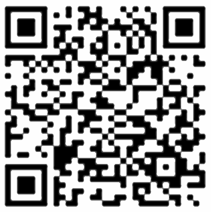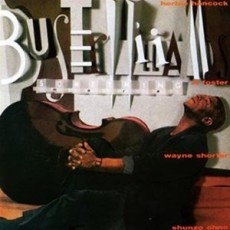
Daily Dose Of Jazz…
Charles Anthony Williams was born April 17, 1942 in Camden, New Jersey. His father was a bassist and his teacher, preparing lessons for him each day, stringing his bass and demanding practice everyday after school.
Nicknamed Buster, he started his professional career in Philadelphia in 1959 working with Jimmy Heath, then went on to play and record with the Gene Ammons – Sonny Stitt quintet from 1960-61. Leaving the quintet he moved to Los Angeles and played behind Betty Carter, Sarah Vaughan and Nancy Wilson through the decade. He also worked with The Jazz Crusaders, Bobby Hutcherson/Harold Land Quintet and Miles Davis.
In 1969, Williams moved to NYC, joined the Herbie Hancock Mwandishi Sextet and for the next three years doubled on acoustic and electric bass. In the ‘70s he worked with Mary Lou Williams and the Ron Carter Quartet and in 1975 released his debut album “Pinnacle”. Since the ’80s, Williams has appeared as a sideman on a significant number of sessions with notable jazz instrumentalists and vocalists, Chet Baker, Kenny Barron, Dexter Gordon, Carmen McRae, Illinois Jacquet, Frank Morgan, McCoy Tyner, Shirley Horn, Woody Shaw, Stanley Cowell and the list continues.
With opportunities to lead his own sessions being rare, in 2008 Buster began releasing a series of live albums exclusively for download through his company, Buster Williams Productions. A solid supportive player, he has made subtle swing, a precise rhythm and superb technique the landmark of his playing.
More Posts: bass
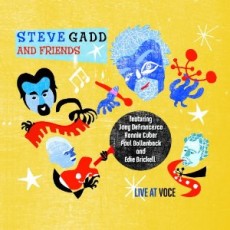
Daily Dose Of Jazz…
Steve Gadd was born April 9, 1945 in Irondequoit, New York and when he was seven his drummer uncle encouraged him to take lessons. By eleven he had sat in with Dizzy Gillespie. After graduating from Irondequoit’s Eastridge High, he attended the Manhattan School of Music for two years before transferring to the Eastman School of Music in Rochester, playing in wind ensembles and concert bands.
After matriculation in the late ’60s, Steve played regularly with Chuck and Gap Mangione, making his recording debut on Gap’s solo album, “Diana in the Autumn Wind” in 1968. Drafted into the Army he spent the next three years drumming in the Army Music Program as a part of the Jazz Ambassadors. Discharged, Gadd returned to Rochester, formed a band and traveled to New York City where eventually the trio split. Gadd stayed on finding work as a studio musician that led to his short tenure with Chick Corea and Return To Forever.
During the ’70s and ‘80s, he toured internationally, recorded with Paul Simon and also with Al Di Meola’s Electric Rendezvous Band. In 1976, Gadd and other session musicians in New York City, including Richard Tee, Eric Gale and Cornell Dupree formed the group Stuff. Their work included appearances on NBC’s Saturday Night Live.
By the end of the 1970s, Steve Gadd was an accomplished drummer bringing orchestral and compositional thinking, great imagination and a great ability to swing to his playing. In 2005 he was awarded an honorary Doctor of Music degree from Berklee College of Music for outstanding contributions to contemporary music. He is one of the highest paid session drummers in popular music.
More Posts: drums,percussion
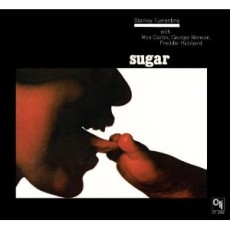
Daily Dose Of jazz…
Stanley William Turrentine was born in the Hill District of Pittsburgh, Pennsylvania on April 5, 1934 into a musical family. His father, Thomas Turrentine, Sr., was a saxophonist with Al Cooper’s Savoy Sultans, his mother played stride piano, and his older brother Tommy Turrentine became a professional trumpet player.
Turrentine began his prolific career with blues and rhythm and blues bands, and was at first greatly influenced by Illinois Jacquet. In the 1950s, he went on to play with the groups of Lowell Fulson, Earl Bostic and at the turn of the decade with Max Roach.
1960 saw Stanley marrying organist Shirley Scott and the two frequently played and recorded together. During this decade he also started working with organist Jimmy Smith, making several soul jazz recordings both with Smith and as a leader.
By the 1970s, after his professional and personal divorce from Scott, Turrentine left hard bop and soul jazz for jazz-fusion. He signed with Creed Taylor’s CTI label and released his debut album “Sugar” that became one of his biggest successes and a seminal recording for the label. He worked with Freddie Hubbard, Milt Jackson, Bob James, Richard Tee, Idris Muhammad, Ron Carter and Eric Gale, to name a few.
In the 80s and 90s Stanley returned to soul jazz though throughout his career along with his CTI releases, he recorded for Blue Note, Fantasy, Prestige, and Impulse record labels. Tenor saxophonist, bandleader and composer Stanley Turrentine passed away from a stroke in New York City on September 12, 2000.
More Posts: saxophone
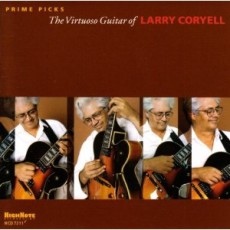
Daily Dose Of Jazz…
Larry Coryell was born April 2, 1943 in Galveston, Texas moved to Washington as a child. After graduating from Richland High School in eastern Washington, he moved to Seattle to attend the University of Washington.
In 1965, Coryell moved to New York City where he became part of Chico Hamilton’s quintet replacing Gabor Szabo. In the Sixties he recorded with Gary Burton, played with The Free Spirits and extended his musical landscape to include influences of rock, jazz and eastern music.
He formed his own group, “The Eleventh House” in 1973 and following the break-up of this band, Coryell played mainly acoustic guitar but returned to electric guitar later in the 1980s.
In 1979, Coryell formed “The Guitar Trio” with jazz-fusion guitarist John McLaughlin and flamenco guitarist Paco de Lucia. The group toured Europe, released “Meeting of Spirits” recorded at Royal Albert Hall in London, however, his drug addiction led to his being replaced by Al Di Meola.
By the turn of the century he settled back into a more mainstream style of playing releasing “Cedars of Avalon”, “Monk, Trane, Miles & Me”, “Tricycles”, and “Power Trio: Live In Chicago”. In 2007, Coryell published an autobiography titled “Improvising: My Life in Music”. Guitarist Larry Coryell remains active in the music industry performing, touring and recording.
More Posts: guitar
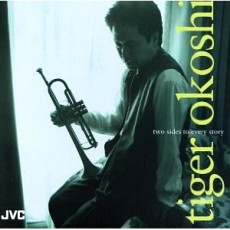
Daily Dose Of Jazz…
Toru “Tiger” Okoshi was born in Ashiya, Japan on March 21, 1950. An autodidact on trumpet, he studied at Kwansei Gakuin University prior to moving to the United States in 1972. He then matriculated through the Berklee School of Music.
Okoshi first gained attention with his collaboration in the Seventies with Gary Burton, then played with the Mike Gibbs Orchestra at Carnegie Hall in 1974. Following this came a tour with Buddy Rich and in the early 90s he played in George Russell’s Living Time Orchestra and recorded with Rakalam Bob Moses.
Tiger has recorded regularly as a leader and sideman with Jay Anderson, Peter Erskine, Bela Fleck, Gil Goldstein, Mike Stern, Jack DeJohnette, Kenny Barron, Mino Cinelu and Bernard Purdie among others. He is currently a professor at Berklee.
More Posts: trumpet


